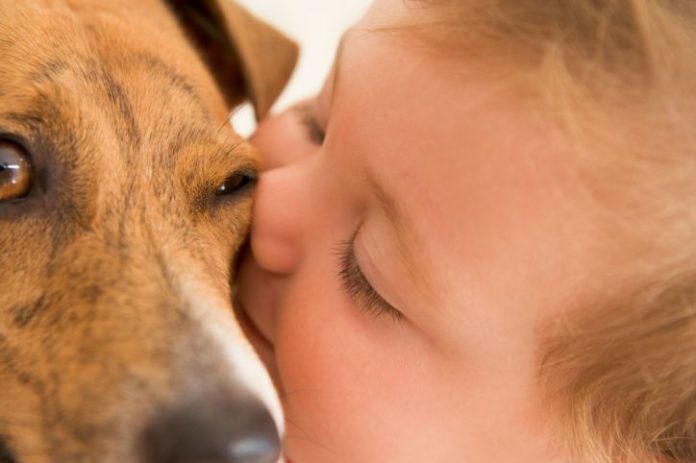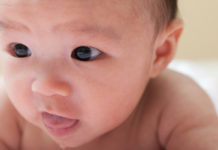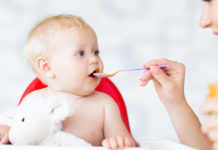A team of researchers has shown that 8-month-old infants expect objects they identify as animals to have insides. The study appears in the Proceedings of the National Academy of Sciences.
University of Illinois professor of psychology Renée Baillargeon, who led the new study with graduate student Peipei Setoh, said that many psychologists have theorized that babies are born with core physical and psychological frameworks that help them navigate the world.
For instance, when babies see a self-propelled object, their core physical framework leads them to understand that the object has internal energy. And when babies see that an object has control over its actions (that is, responds to changes in its environment), their core psychological framework leads them to view the object as an agent that has mental states.
“In each case, babies seem to be born equipped with abstract expectations that drive their reasoning,” Baillargeon said.
For a long time, researchers debated whether in addition to these physical and psychological expectations, infants also possess biological expectations that orient them to think about animals the right way.
“Our contribution was to find a way to tackle this question experimentally, by asking what young babies know about animals’ insides,” Baillargeon said.
Researchers have previously found that preschool-age children possess biological knowledge about animals’ insides. “Young children expect animals to have different insides from inanimate objects, and they realize that an animal’s insides are important for its survival,” Setoh said. “They know that if you remove the insides, the animal can’t function.”
The team decided to test whether 8-month-old babies already understand that animals have insides.
Setoh designed an experiment utilizing the violation-of-expectation method: If babies see something happen that they don’t expect, they look at it longer than they otherwise would. The researchers first familiarized the babies in the experiments with objects that had different characteristics. Some objects appeared to be self-propelled and agentive, other objects had only one of these properties, and other objects had neither of these properties. The researchers then tested the babies’ expectations by revealing that the objects were hollow.
The infants looked longer at the hollow objects only if the objects were previously shown to be both self-propelled and agentive, indicating that those objects’ hollowness violated the infants’ expectations, Baillargeon said.
“When babies encounter a novel object that is both self-propelled and agentive, they categorize it as an animal, and they assume it has insides,” Baillargeon said. “It cannot be hollow.”
Another experiment the group preformed took advantage of the fact that by eight months, most babies have learned to use fur as a cue that an object might be an animal. When shown a novel, self-propelled object covered with beaver fur, babies again identified the object as an animal, expected it to have insides, and were surprised when it was shown to be hollow.
The researchers theorized babies expect animals to have insides because they possess a core understanding of biology in addition to their core understandings of physics and psychology.
“These findings go against previous claims that babies have no core understanding of biology,” Baillargeon said. “Now that we have shown babies expect totally novel animals to have insides, it calls these claims into question.”
A second explanation for this behavior is that babies’ expectations about animals and their insides are tied to the cognitive systems humans evolved to deal with predators and prey – in other words, to deal with animals as a food source.
“Understanding that animals are capable of both self-propulsion and agency would have greatly helped our human ancestors to evade predators and to capture prey,” Baillargeon said. “And insides would have played a critical role in their interactions with all animals. A predator whose insides have been removed is no longer a threat. And of course, eating the insides of a predator or prey provides nutritious food.”
Baillargeon believes the findings will help scientists and others better understand how babies see the world.
“It’s interesting to know now that when babies go to the park and see rabbits and dogs and birds, they think all of them have stuff inside!”
(Source: University of Illinois, Proceedings of the National Academy of Sciences)
- Advertisement -
Date Created: October 4, 2013











